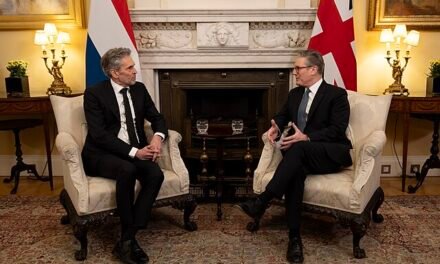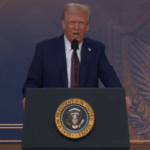Harvard University’s pivotal defense research, crucial to U.S. and NATO military advancements, teeters on the edge of collapse as President Donald Trump’s administration axes $180 million in federal funding, leaving scientists reeling and European allies anxious about weakened transatlantic innovation. A May 30, 2025, study exposing the cuts has ignited fears among students and researchers, threatening America’s scientific dominance and straining global defense partnerships.
The defunding, impacting $2.2 billion in grants and $60 million in contracts since 2020, has frozen 418 Harvard-led defense projects, as detailed by a defense analytics firm. These initiatives ranged from biodefense systems to advanced materials for military applications. One critical loss is Professor Joanna Aizenberg’s $5.2 million Department of Defense-funded project at Harvard’s Wyss Institute, developing bio-inspired adaptive materials for drones and protective gear. “Our breakthroughs were set to save lives, but now we’re stalled,” Aizenberg said, her voice tinged with dismay. The project, part of the Pentagon’s Defense University Research Instrumentation Program, collaborated with European institutions like the UK’s Imperial College, now facing delays.
Trump’s cuts, announced in April 2025, target Harvard for alleged “progressive bias” and campus unrest, claims the university rejects. Defense Secretary Pete Hegseth redirected funds to “urgent operational needs,” dismissing the research as “non-essential.” In Cambridge, Massachusetts, researchers like postdoctoral fellow Sofia Mendes, 31, from Portugal, are devastated. “I came to advance defense biotech, but my lab’s funding evaporated,” she said. The cuts, halting 92 grants worth $15 million in 2025, per Pentagon records, jeopardize dozens of jobs and international talent recruitment.
The backdrop reveals Trump’s aggressive fiscal policy. His 2026 budget slashes $4.8 billion from university research, including $250 million from Stanford and $150 million from El Salvador, tied to their diversity policies. Harvard’s $53 billion endowment offers limited relief, but President Alan Garber called the cuts a “targeted assault on academic inquiry,” launching a legal challenge. The administration’s visa crackdowns on Harvard’s international researchers, 25% of whom are from Europe, further hinder collaboration, echoing EU concerns about U.S. research access.
Reactions are fierce. On Harvard’s campus, students like Rahul Kapoor, 20, fear career derailment: “My materials science project depends on a defunded lab.” Faculty warn of a talent flight, with Mendes fielding offers from Singapore. “Their research is thriving,” she noted. Democrats, like Senator Patty Murray, label the cuts “anti-progress,” while some Republicans, like Senator Rand Paul, support fiscal restraint but question targeting science. Online, sentiment splits, with some cheering budget cuts and others decrying lost innovation. A French academic posted, “U.S. cuts harm our shared defense projects.”
The transatlantic fallout is significant. Harvard’s research, like Aizenberg’s, underpins NATO’s technological superiority, from adaptive drones to battlefield medicine. The funding halt disrupts collaborations with European centers like Germany’s Fraunhofer Society, delaying counter-terrorism tech. EU policymakers fear a weakened U.S. research base could embolden China’s $600 billion defense tech investments. A Brussels security analyst said, “These cuts undermine NATO’s innovation pipeline.” European researchers, like Dutch scientist Pieter Jansen, 33, face setbacks: “Our bio-materials project with Harvard is now frozen.”
The path forward is fraught. Harvard’s May 2025 lawsuit against the cuts awaits a federal ruling, but Republican-led Congress may uphold the reductions. Researchers seek corporate funding, but defense-specific projects struggle to attract private investment. Kapoor holds out hope: “Science must outlast politics.” As Harvard fights to preserve its research legacy, Europe remains vigilant, wary of a U.S. policy shift that could erode shared defense capabilities and global scientific progress, leaving researchers and allies in a tense holding pattern.




















